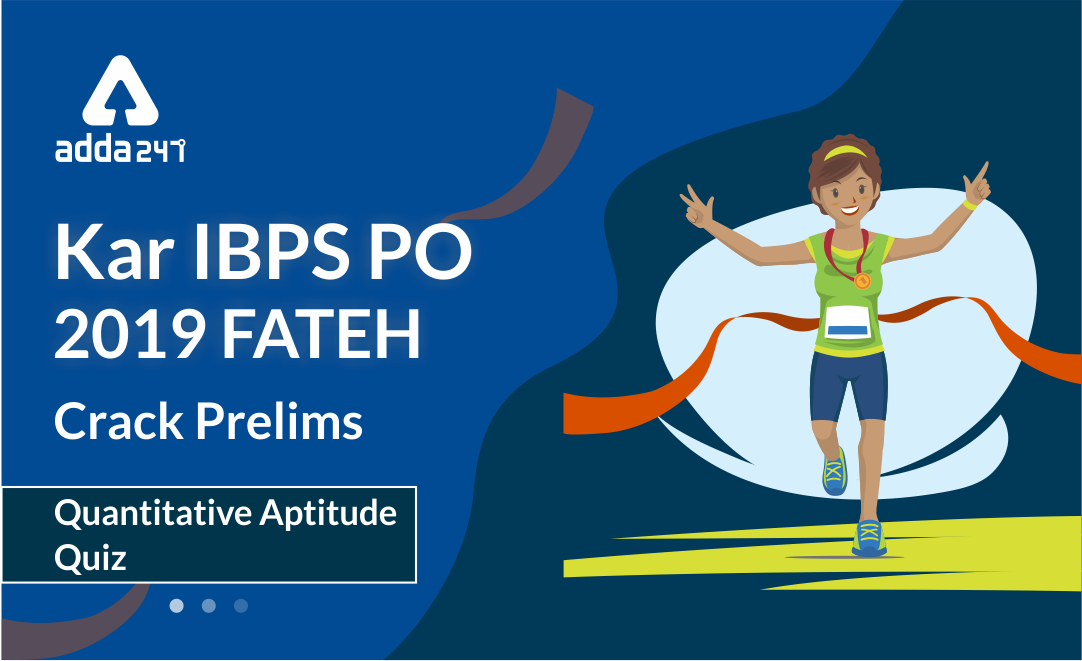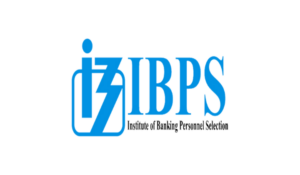IBPS PO Quantitative Aptitude Quiz
With the increasing level in exams, quantitative aptitude has become the ineluctable hitch. Generally, questions asked in this section are calculative and lengthy that consumes your time. This subject can do wonders if you always keep a check on your accuracy, speed and time. Accuracy is what matters the most. To help you prepare the section we have provided a well-defined IBPS PO Prelims Study Plan. You can also Prepare from the study note to clear your basic concepts. Attempt this quantitative aptitude quiz and check your performance for the upcoming IBPS PO Prelims Study Plan 2019. Following is the quiz of 6th September, that inculcate the important topic from Profit And Loss and Quadratic Inequalities.
Q1. A sell a scooter priced Rs. 36,000. He gives a discount of 8% on the first Rs. 20,000 and 5% on the next Rs. 10,000. How much discount can he afford on the remaining Rs. 6,000 if he is to get as much as when 7% discount is allowed on the total?
(a) 5%
(b) 6%
(c) 7%
(d) 8%
(e) None of the above
Q2. A shopkeeper sold an article for Rs 750 after giving 20% discount on the labeled price an made 40% profit on the cost price. What would have been the percentage profit, had he not given the discount?(approx)
(a) 77%
(b) 85%
(c) 60%
(d) 70%
(e) 75%
Q3. Shopkeeper gave an additional 20 per cent concession on the reduced price after giving 30 per cent standard concession on an article. If Arun bought that article for Rs 1120, what was the original price?
(a) Rs 3000
(b) Rs 4000
(c) Rs 2400
(d) Rs 2000
(e) Rs 4300
Q4. An article is sold at profit. If its cost price is increased by Rs 40 and at the same time if its selling price is also increased by Rs 35, the percentage of profit becomes 15%. Find the cost price.
profit. If its cost price is increased by Rs 40 and at the same time if its selling price is also increased by Rs 35, the percentage of profit becomes 15%. Find the cost price.
Q5. Raju purchased a mobile phone and a refrigerator for Rs. 12,000 and Rs. 10,000 respectively. He sold the refrigerator at a loss of 12 per cent and the mobile phone at a profit of 8 per cent. What is his overall loss/profit ?
(a) Loss of Rs. 280
(b) Profit of Rs. 2,160
(c) Loss of Rs. 240
(d) Profit of Rs. 2,060
(e) None of these
Q6. An article costing Rs. 20 was marked 25% above the cost price. After two successive discounts of the same percentage, the customer now pays Rs. 20.25. What would be the percentage change in profit had the price been increased by the same percentage twice successively instead of reducing it?
(a) 3600%
(b) 3200%
(c) 2800%
(d) 4000%
(e) 3800%
Q7. If books bought at prices from Rs. 150 to Rs. 300 are sold at prices ranging from Rs. 250 to Rs. 350. What is the greatest possible profit that might be made in selling 15 books?
(a) Cannot be determined
(b) Rs. 750
(c) Rs. 4, 250
(d) Rs. 3,000
(e) None of these
Q8. A man purchases two fans for Rs. 2,160. By selling one fan at a profit of 15% and the other at a loss of 9% he neither gains no loss in the whole transaction. Find the cost price of each fan (in Rs)?
(a) 710, 1450
(b) 1530, 630
(c) 810, 1350
(d) 1340, 820
(e) None of these
Q9. A man bought a mobile and a laptop for Rs. 78000. He sold the mobile at a gain of 25% and the laptop at a loss of 15%, thereby gaining 5% on the whole. Find the cost price of mobile.
(a) Rs. 39000
(b) Rs. 34000
(c) Rs. 30000
(d) Rs. 38000
(e) Rs. 32000
Q10. Anil owns a house worth Rs. 10000. He sells it to Bimal at a profit of 10% based on the worth of the house. Bimal sells the house back to Anil at a loss of 10%. In this transaction, Anil gets
(a) a profit of Rs. 2000
(b) a profit of Rs. 1100
(c) a profit of Rs. 1000
(d) No profit no loss
(e) None of these
Directions (11-15): Equation number I and II are given. You have to solve both the questions and answer.
(a) x ≤ y
(b) x ≥ y
(c) Relationship between x and y cannot be determined
(d) x < y
(e) x > y
(a) x ≤ y
(b) x ≥ y
(c) Relationship between x and y cannot be determined
(d) x < y
(e) x > y
(a) x ≤ y
(b) x ≥ y
(c) Relationship between x and y cannot be determined
(d) x < y
(e) x > y
(a) x ≤ y
(b) x ≥ y
(c) Relationship between x and y cannot be determined
(d) x < y
(e) x > y
(a) x ≤ y
(b) x ≥ y
(c) Relationship between x and y cannot be determined
(d) x < y
(e) x > y
- Quantitative Aptitude Study Notes for Bank Exams
- Quantitative Aptitude Questions for all Competitive Exams
Appearing For IBPS PO 2019? Fill this form to get free study Material!
All the Best BA’ians for IBPS RRB Prelims Result!!

























 IBPS RRB PO Mains Admit Card 2025 Out at...
IBPS RRB PO Mains Admit Card 2025 Out at...
 IOCL Non Executive Personnel Recruitment...
IOCL Non Executive Personnel Recruitment...
 Daily Current Affairs News: 20th Decembe...
Daily Current Affairs News: 20th Decembe...








